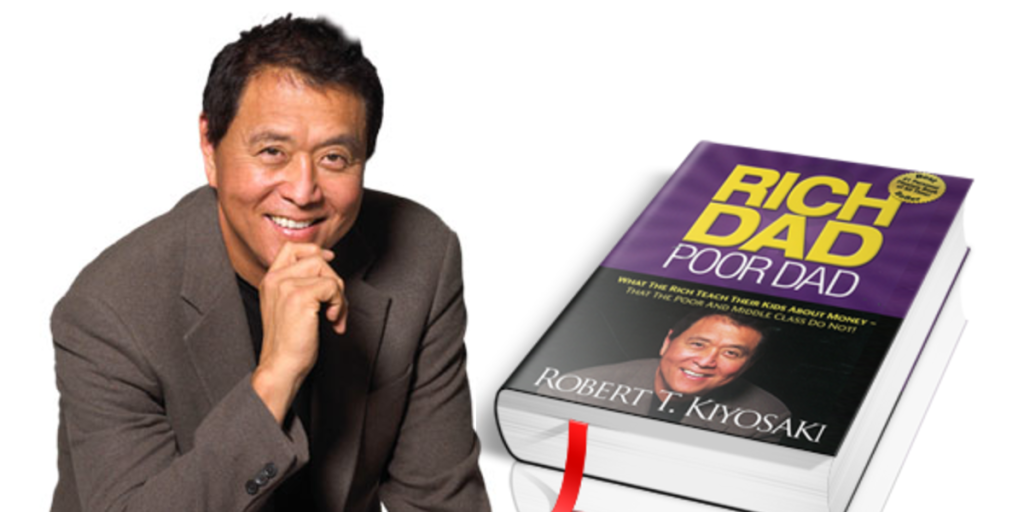Introduction
“Rich Dad Poor Dad” by Robert T. Kiyosaki is a revolutionary personal finance book that challenges conventional beliefs about money and offers a fresh perspective on building wealth. The book, published in 1997, has since become a bestseller and a financial classic, inspiring countless individuals to take control of their financial destinies.
Overview of “Rich Dad Poor Dad” Book
The book is written in the form of a memoir, recounting Kiyosaki’s childhood and the contrasting lessons he learned from two father figures – his real father (referred to as “Poor Dad”) and the father of his best friend (referred to as “Rich Dad”). These two men had vastly different attitudes toward money and wealth, leading to disparate financial outcomes in their lives.
Key Takeaways from the Book
Different Views on Money
One of the central themes in “Rich Dad Poor Dad” is the differing views on money held by the two fathers. Poor Dad believed in the traditional path of getting a good education, finding a stable job, and working hard for a paycheck. On the other hand, Rich Dad advocated for financial education, entrepreneurship, and building wealth through investments.
Importance of Financial Education
Kiyosaki emphasizes the importance of financial education, which he believes is lacking in traditional school curriculums. Understanding basic financial concepts such as assets, liabilities, cash flow, and taxes is crucial for achieving financial independence.
Assets vs. Liabilities
The book distinguishes between assets and liabilities. Assets are defined as things that put money in your pocket, while liabilities take money out of your pocket. Acquiring income-generating assets is key to achieving financial freedom.
The Cash Flow Quadrant
Kiyosaki introduces the Cash Flow Quadrant, which categorizes people into four groups: Employees, Self-Employed, Business Owners, and Investors. He explains the advantages of being in the right quadrants, particularly the “Business Owners” and “Investors” categories, as they offer greater opportunities for wealth creation.
Personal Finance Lessons
Pay Yourself First
Kiyosaki advises readers to prioritize saving and investing by paying themselves first before covering other expenses. This simple but powerful concept can significantly impact one’s long-term financial well-being.
Taking Risks and Overcoming Fear
The book encourages readers to face their fears and take calculated risks to achieve financial success. Risk-taking is often a necessary step in pursuing opportunities that can lead to greater rewards.
The Power of Passive Income
Generating passive income streams is a crucial aspect of building wealth, according to Kiyosaki. Passive income provides financial security and allows individuals to have more control over their time.
Building Assets and Investments
Kiyosaki urges readers to focus on acquiring income-generating assets, such as real estate and businesses, rather than indulging in excessive consumerism. Investments are a pathway to creating sustainable wealth.
Criticism and Controversy
While “Rich Dad Poor Dad” has garnered widespread acclaim, it has also faced criticism. Some critics argue that the book lacks specific investment advice and can be overly simplistic in its approach to achieving financial success.
The Impact of “Rich Dad Poor Dad”
Transforming Mindsets
One of the most significant impacts of the book has been its ability to transform the way people think about money and wealth. It encourages individuals to challenge their beliefs and adopt a more proactive approach to their financial future.
Success Stories
“Rich Dad Poor Dad” has inspired numerous success stories of people who applied its principles and achieved financial independence. Many individuals credit the book for setting them on a path toward financial prosperity.
Conclusion
“Rich Dad Poor Dad” is a thought-provoking and paradigm-shifting book that challenges conventional financial wisdom. By encouraging readers to think differently about money, investments, and financial education, the book offers valuable insights for those seeking to improve their financial well-being.
Read More: Mic for YouTube: Enhancing Your Content with Top-Quality Audio
FAQs
Q: Is “Rich Dad Poor Dad” suitable for readers with no background in finance?
A: Absolutely! The book is written in a simple, accessible style that caters to readers of all financial backgrounds.
Q: Does the book provide specific investment advice?
A: While the book focuses on principles rather than specific advice, it offers valuable insights into building a solid financial foundation.
Q: Can “Rich Dad Poor Dad” guarantee financial success?
A: The book is not a guaranteed path to wealth, but it can provide a mindset shift that can positively impact one’s financial decisions.
Q: Is “Rich Dad Poor Dad” applicable to all age groups?
A: Yes, the book’s principles are applicable to readers of all ages, from young adults to those nearing retirement.
Q: How has “Rich Dad Poor Dad” impacted society as a whole?
A: The book’s impact extends beyond individuals; it has sparked conversations about financial literacy and inspired a movement toward greater financial education.


